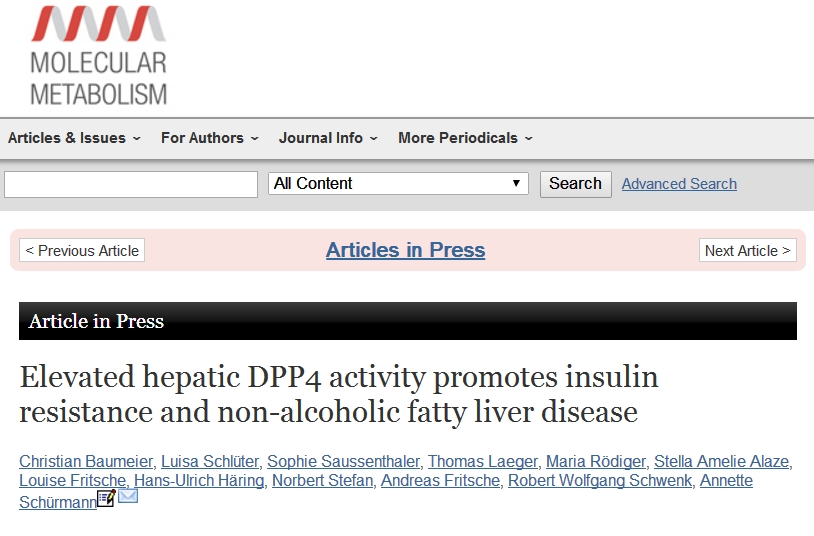Search Product
Structure Search
Search
Advantage Products
Location: Industrial Info
High hepatic DPP-4 activity can promote NAFLD?
2017-08-30
来源:转载自第三方
30 August 2017
Researchers from the University of Potsdam and the University of Tübingen have found that high levels of DPP-4 in the liver promote the formation of non-alcoholic fatty liver desease (NAFLD). The study has been published in the journal "Molecular Metabolism".

DPP-4 is an enzyme secreted by the liver that decomposes proteins in the body, such as GLP-1. GLP-1 can reduce blood glucose by stimulating insulin, inhibiting glucagon, inhibiting gastric emptying and regenerating islet cells. Therefore, GLP-1 levels can be increased by inhibiting DPP-4 to achieve the goal of treating diabetes. The most deeply studied DPP-4 inhibitors which have been used in clinical are Sitagliptin, Vildagliptin (intermediate 3-amino-1-adamantanol), Saxagliptin, Alogliptin and Linagliptin. Because of the low probability of hypoglycemia, and no effect on body weight, DPP-4 inhibitors are superior to most traditional oral hypoglycemic agents, and have been gradually recognized in domestic and foreign clinical guidelines.
Non-alcoholic fatty liver disease (NAFLD) is the most common cause of chronic liver disease and is the leading cause of the onset and death of liver-related diseases around the world, which may progress to cirrhosis or hepatocellular carcinoma. Scientists have found that high levels of DPP-4 expression in the liver are associated with NAFLD, but whether it is the cause of NAFLD? That is not yet clear. In order to further explore the relationship between the two, the researchers conducted this study.
The researchers divided the mice into two groups for genetic modification, one group can secrete excessive DPP-4, the other one can only secrete lower levels of DPP-4, both groups of mice were given high fat diet for 6 months. The results showed that the increase of fat levels in mice with high levels of DPP-4 was one-third higher than that of the control group, and excessive accumulation of fat in hepatocytes could cause NAFLD.
The results suggest that the rise in DPP-4 levels has a negative effect on the normal function of live in the mouse. In addition, some studies of meta-analysis showed that GLP-1 receptor agonists had a significant positive effect on NAFLD patients. Therefore, it is inferred that inhibition of DPP-4 activation is not only able to treat diabetes, but also can help treat NAFLD, but it is still need further study.
Edited by Suzhou Yacoo Science Co., Ltd.
如果涉及转载授权,请联系我们。












